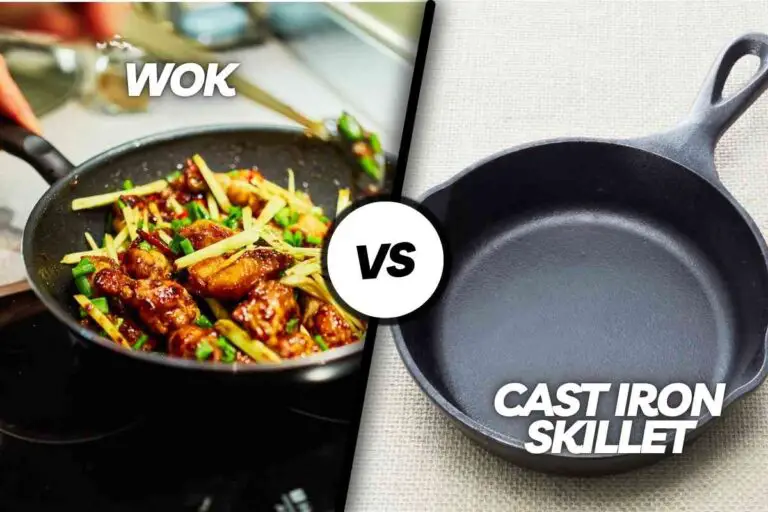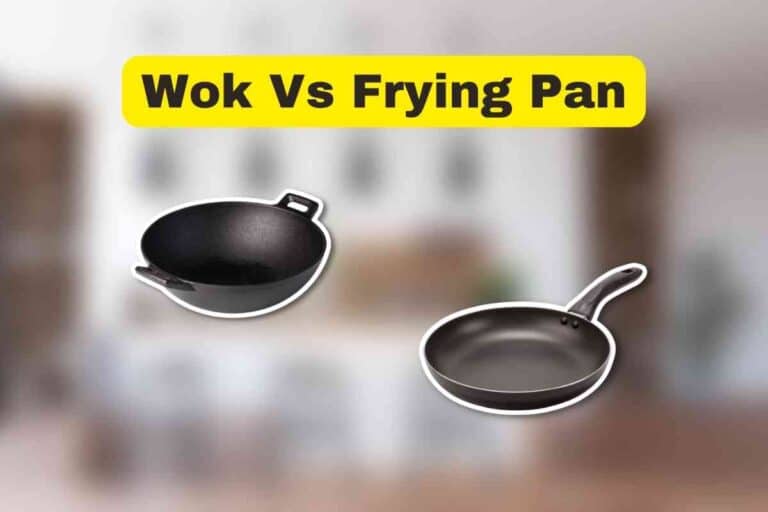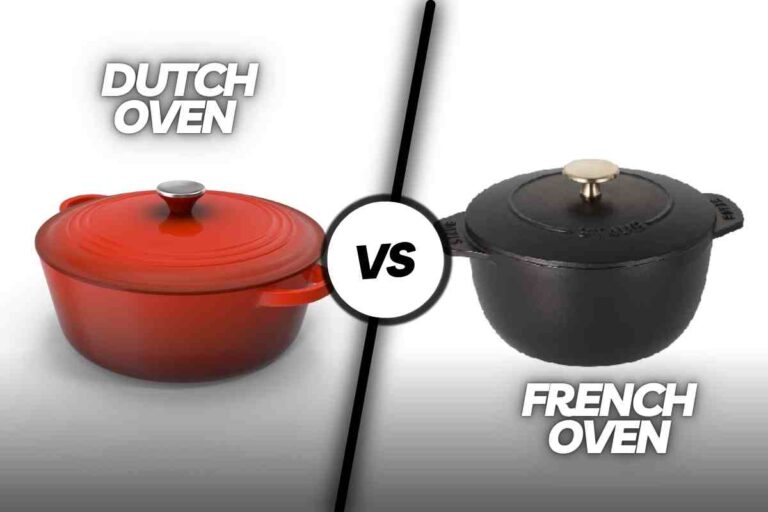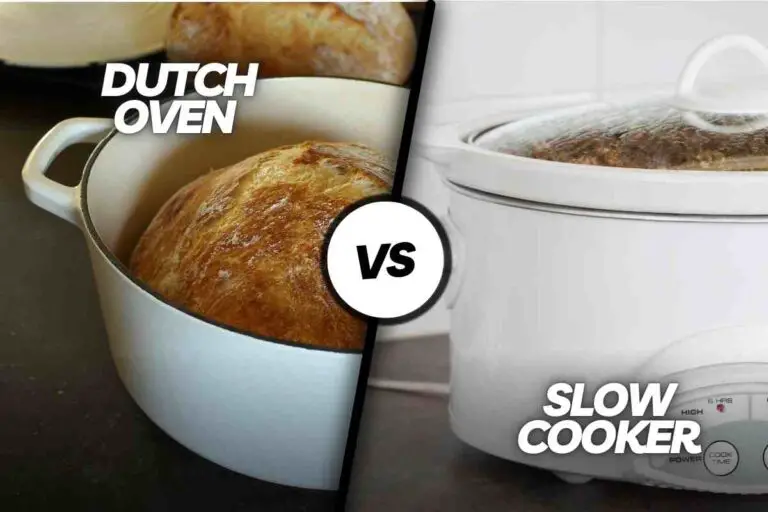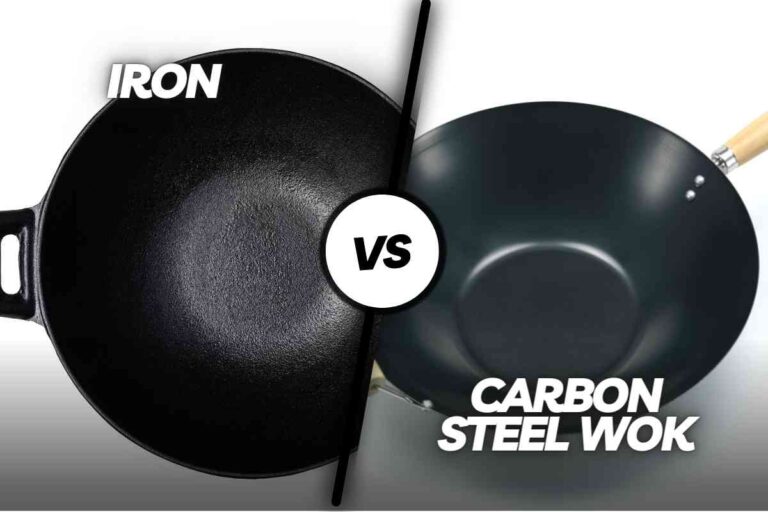5 Key Differences: Wok Vs Dutch Oven
The primary difference between a Dutch oven and a wok lies in their design and cooking applications. Dutch ovens have lower walls and are ideal for slow-cooking stews and roasts, providing excellent temperature control at around 350°F.
In contrast, woks have higher walls and are well-suited for stir-frying or deep frying, with the higher walls helping to regulate splatters when using plenty of cooking oil.
Each cookware excels in specific culinary tasks, with Dutch ovens geared towards slow-cooked dishes and woks specialized for high-heat, quick-cooking techniques.
5 Key Differences: Wok Vs Dutch Oven
| Characteristic | Dutch Oven | Wok |
|---|---|---|
| 1. Design | Low-walled, round pot | High-walled, round pan |
| 2. Cooking Applications | Slow-cooking stews, roasts | Stir-frying, deep frying |
| 3. Temperature Control | Excellent control at 350°F+ | High-heat, quick-cooking |
| 4. Stir-frying, deep-frying | Minimal splatter | Effective splatter regulation |
| 5. Versatility | Suited for slow-cooked dishes | Specialized for quick cooking |
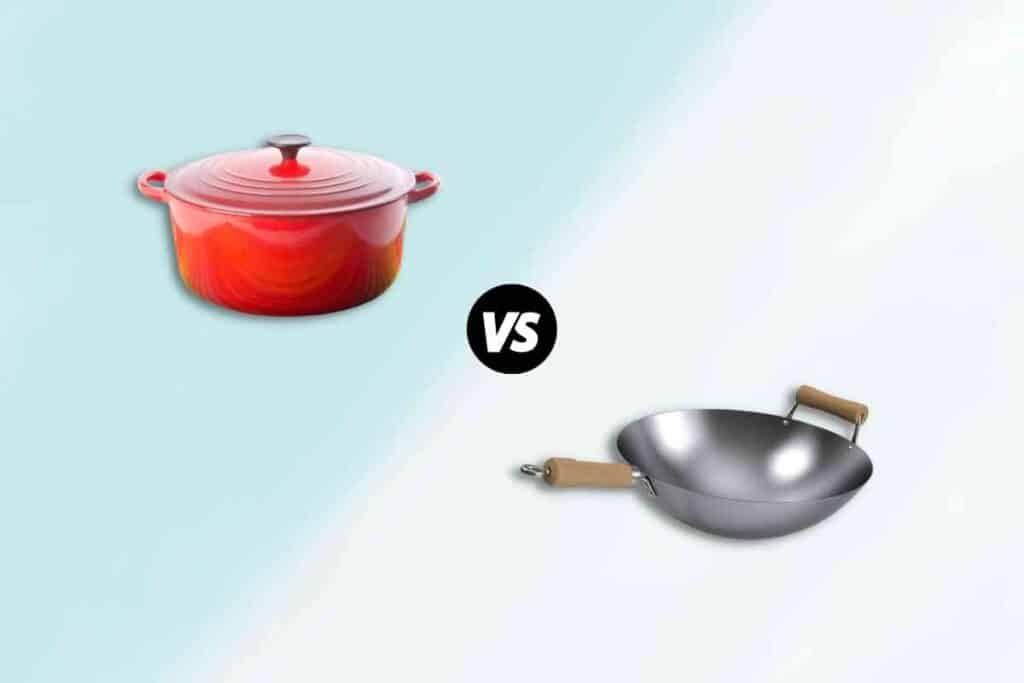
What is a Wok?
A wok is a deep round-bottomed pan that is commonly used for cooking. This unique pan originates in China and is thought to have been inspired by the South Asian karahi.
Similar pans are also used in East and Southeast Asia and are becoming increasingly popular around the world.
The wok is one of the most versatile cooking vessels. Because of its sloped sides, it is ideal for stir-frying.
Woks are made of carbon steel, which holds heat well. Because of this, food cooked in a wok will get a charred flavor.
While a frying pan is more commonly used for frying and searing, a wok is best for stir-frying.
It can also be used for steaming and cooking dumplings. It can also be used as an indoor smoker, which makes it a versatile tool.
What is a Dutch Oven?
Whats a Dutch oven! A Dutch oven is a type of cast-iron cookware. It is a great tool for making soups, stews, and chilis. You can also use it for cooking meat.
The heavy-duty lid prevents moisture from escaping, and the deep, thick-bottomed pot prevents hot spots. There are many different sizes of Dutch ovens.
A Dutch oven is similar to a stockpot but with a wide base and thicker walls. This construction helps seal in flavor and moisture and makes Dutch ovens ideal for braises and stews.
These ovens also make a great vessels for baking bread. Typically, these pans are made of heavy cast iron.
While many Dutch ovens are made of cast iron, some have an enamel coating. A study published in the Journal of the American Dietetic Association found that these pans can transfer iron into the food they cook.
The amount of iron transferred depends on the type of food, especially acidic foods. However, it has not been proven that this transfer affects consumer absorption.
Wok Vs Dutch Oven – What’s the Difference?
Both are types of cookware, but they serve different purposes. Woks are great for stir-frying or deep frying, while Dutch ovens are better for slow-cooking stews and roasts.
Dutch Oven Wok: The most obvious difference between a wok and a dutch oven is the size. The diameter of a wok is much larger than that of a dutch oven, and a wok can easily accommodate a large amount of food.
The wok is also a Chinese cast iron pan that is often used for stir-frying. It is also an essential kitchen utensil for Cantonese and Sichuan cuisine.
However, the dutch oven has a round bottom, while the wok has a flat bottom. The dutch oven is larger and is meant to be placed over a stovetop, while the wok can be used anywhere.
Can You Use A Wok Instead of a Dutch Oven?
When frying food, you can use a wok instead of a Dutch oven. This kind of cookware is more efficient and has a higher wall than a Dutch oven, so the oil will not spill out.
It also has a large surface area, which helps in dissipating the oil bubbles.
A wok is made of a variety of materials, including cast iron and ceramic-lined ones. Many first-time wok users gravitate toward Teflon-coated woks, which do not require seasoning and allow for easy cleanup.
When shopping for a wok, remember that it is important to choose the right size. Most woks are too large for home cooks.
If you are a professional chef, you may need a 16-inch version, but if you’re a home cook, you may need a smaller one. Also, consider your stove type and how many people you plan to feed.
Maintenance
When it comes to cooking, you should consider both a wok and a dutch oven. Both are versatile cooking appliances that can be used for many different tasks.
Both are also great for making soups and stews. However, there are some differences that you need to know before you make the final decision.
Woks are easier to maintain than a Dutch oven. When frying foods, the high walls of a wok spread the heat evenly.
This helps you cook foods with less oil. You can also strain the oil if you wish. A Dutch oven is better for oven cooking, but it requires more maintenance.
Size and Weight
When comparing the two cooking pots, you should first consider size and weight. The larger the Dutch oven, the more difficult it is to cook in, while a wok’s curved sides make the process easier.
Both pots are heavy but differ in weight depending on the material used. A carbon steel dutch oven will be lighter than a cast iron one.
Although they’re both versatile cooking vessels, the dutch oven will require more oil than a wok. Also, stir-frying is harder in a dutch oven than in a wok.
Pros and Cons of Wok
Pros:
- Woks distribute heat more evenly than a Dutch oven, so your food will cook more evenly.
- They are lighter and easier to handle than a Dutch oven.
- Woks take up less space than a Dutch oven.
Cons:
- Woks can be difficult to use if you’re not used to cooking with one.
- When using an electric stove, wok rings are required.
Pros and Cons of Dutch Oven
Pros:
- Dutch ovens are very versatile and can be used for various recipes.
- They retain heat well, so your food will stay warm longer.
- Generally easier to clean than a wok.
Cons:
- Dutch ovens can be heavy and difficult to handle.
- They take up more space than a wok.
- More expensive than a wok.
Related Posts:
- Wok Vs Saucepan – Which Is Better
- How To Cook In A Wok
- What Wok Should I Buy
- What Size Wok Should You Buy
Thank you for reading this post.
I hope this post, “Wok Vs Dutch Oven,” is helpful for you. If you like this post, please share it with your friends and family.

